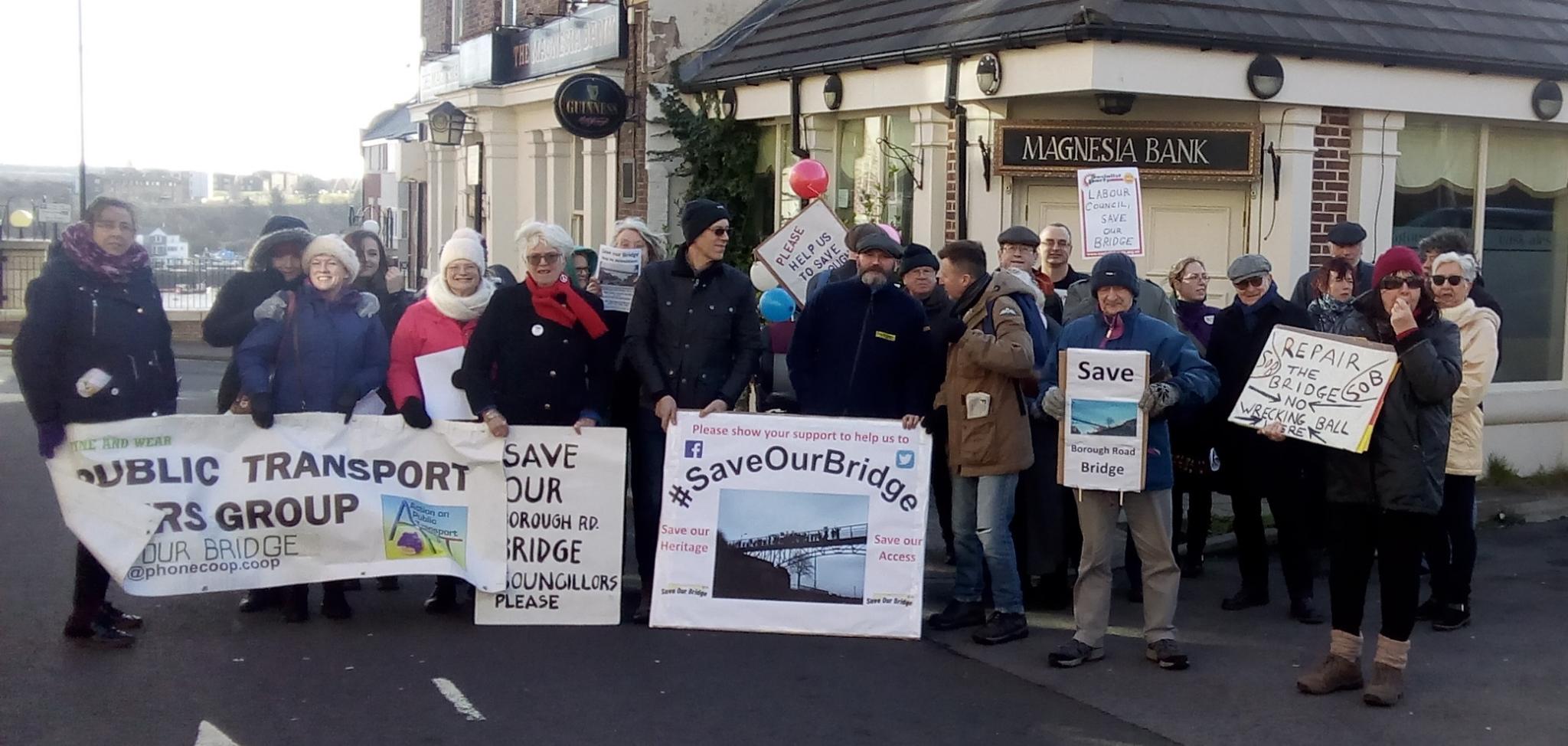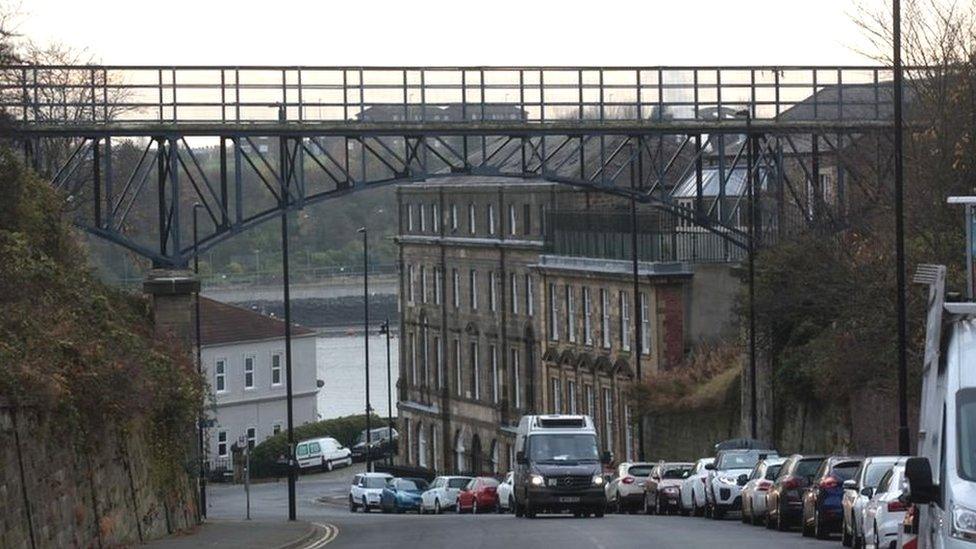North Shields Borough Bridge saved from demolition

North Tyneside Council wanted to demolish the bridge, which was built in 1936
At a glance
A public inquiry has concluded Borough Road Bridge in North Shields should not be demolished
North Tyneside Council had argued the crossing would cost too much to repair and was rarely used
A Planning Inspectorate report said the cost savings of demolition would be outweighed by the loss to the public
- Published
A public inquiry has rejected controversial proposals to demolish an 87-year-old footbridge.
North Tyneside Council wanted to remove Borough Road Bridge in North Shields, saying it would cost too much to repair and was rarely used.
Objectors said renovation estimates were inaccurate and the bridge offered a safe crossing for elderly and disabled people and children.
Government inspector Sue Arnott said she was "not satisfied" the advantages anticipated by the authority outweighed the "significant disadvantages".
In her report, she noted the local authority wanted to save money but had not quantified the cost benefit of retaining the bridge.
The council confirmed it had received a copy of the Planning Inspectorate's decision, which it was "currently reviewing", but could not comment further.
'Vulnerable to closure'
Ms Arnott said the council "appears to undervalue recreational use of the bridge" and had not recognised "its contribution to the health and well-being of local residents".
Closing a highway "solely" on the grounds of cost or low usage set "a worrying precedent", she added.
If retaining public rights of way was just determined by financial considerations "a great many paths across the country may be vulnerable to closure, simply to facilitate savings for cash-strapped councils", she warned.
The council said the bridge, connecting Tennyson Terrace and Waldo Street, would cost £420,000 to repair, with demolition estimated at £63,000.
Campaigners claimed the route was essential for older and disabled people, and families with children, and only needed to be repaired because it had been allowed to deteriorate.

A campaign group formed to try and stop the bridge's demolition
In her report, Ms Arnott said the bridge's closure would be "in conflict" with council policies supporting walking for both health and climate change-related targets.
Many used the bridge "because it is traffic-free, with minimal slopes and good views" and the alternative had "none of these features" and was much longer, she said.
Ms Arnott also considered claims the council's methodology for determining usage of the bridge was flawed and said, even if its figures were accepted, the numbers were not "low usage for a foothpath in my view".
North Tyneside Public Transport Users Group said it was "delighted that our collective efforts have resulted in the bridge and public right of way being saved".
The group looked forward to "much-needed repairs starting immediately", it said.
Follow BBC North East & Cumbria on Twitter, external, Facebook, external and Instagram, external. Send your story ideas to northeastandcumbria@bbc.co.uk.
Related topics
- Published3 February 2023

- Published18 January 2023
